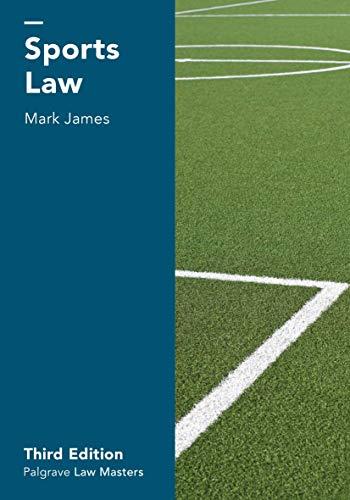Question
Fact Pattern: Following the most recent census, the state of West Ohio legislature redrew the boundaries of its 140 House districts and 50 Senate districts.
Fact Pattern:
Following the most recent census, the state of West Ohio legislature redrew the boundaries of its 140 House districts and 50 Senate districts. In doing so, it sought to apportion (as close as feasibly possible) an equal population to each district. Additionally, it sought to ensure compliance with section five of the Voting Rights Act, which prohibits the state from stripping the ability of a minority group within a district of its existing ability to elect its candidates of choice.
In order to achieve these goals, the legislature redraws several districts, including House District 33. Specifically, the legislature added 20,000 individuals to House District 33. All but 20 of those individuals are black. The remaining 20 are white.
The West Ohio Democratic Conference challenges the redistricting of House District 33 as violative of the Fourteenth Amendment.
Instructions:
Do you agree with the following? Conclude "yes" or "no" and explain why. In your explanation, be sure to provide the rule and apply the law to the facts:
The 14th Amendment demonstrates the equal protection of individuals against state and local governments: "No State shall make or enforce any law which shall abridge the privileges or immunities of citizens of the United States; nor shall any State deprive any person of life, liberty, or property, without due process of law; nor deny to any person within its jurisdiction the equal protection of the laws". To consider equal protection violation, there are three suspect classes - race, religion, and national origin and alienage. The court would automatically apply "strict scrutiny" in those classifications. Under "strict scrutiny", a law is upheld if it is "necessary to achieve a compelling government actual purpose". This is the highest level of scrutiny, and the burden is on the government to prove. Here, the new legislature by West Ohio involves a racial difference between voting districts, therefore, strict scrutiny shall apply. The burden automatically shifts to the government to prove they meet the requirements. Can the government approve that the means they use are necessary, and to achieve a compelling actual purpose? The government could argue that they are redrawing House District 33 in order to apportion an equal population to each district, however, having 20,000 individuals added may be qualifying, but having a huge difference in the race of the populations might not be a necessary mean for the purpose of equal population. The government could also argue that the legislation is to ensure compliance with the Voting Rights Act, and to protect a minority group with the ability within this district to elect its candidates of choice, however, is this a compelling government purpose? is this the least restrictive means to achieve the government's purpose? Probably not. Therefore, I think the court might rule against the government's action.
Step by Step Solution
There are 3 Steps involved in it
Step: 1

Get Instant Access to Expert-Tailored Solutions
See step-by-step solutions with expert insights and AI powered tools for academic success
Step: 2

Step: 3

Ace Your Homework with AI
Get the answers you need in no time with our AI-driven, step-by-step assistance
Get Started


